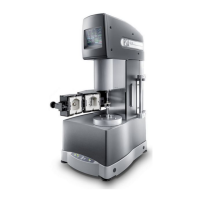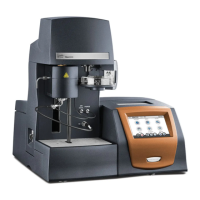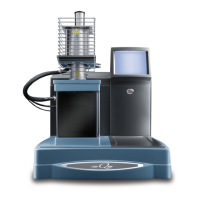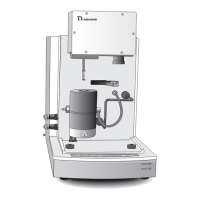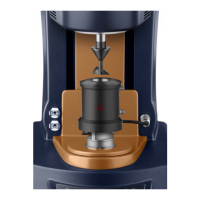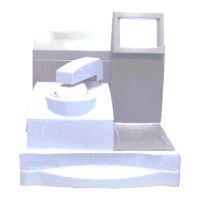AR 2000 Operator's Manual
62
Preventing Solvent Evaporation
If you are using samples that contain volatile solvents or are water-based, evaporation can cause problems
during measurements. TA Instruments has overcome this problem by using a solvent trap cover, which sits over
the geometry (but does not touch it).
Solvent trap version geometries have a well on top of the geometry. Place a small amount of the relevant solvent
into this well. The solvent trap cover has a lip that sits in the solvent, allowing the free space around the sample
to become saturated with the solvent vapor, which prevents evaporation.
A schematic of a solvent trap cover and geometry is shown in Figure 6.7 below.
When using solvent trap systems it is generally advisable to run the inertia correction wizard (with solvent in
the trap, but no sample loaded).
Preventing Slippage at
Sample/Geometry Interface
Some samples, such as hydrogels, contain a lot of water that can migrate to the surface of the sample. This can
cause a film layer to form between the bulk of the material and the geometry surface, causing slippage at this
interface. To alleviate this problem, use special crosshatched geometries, which, in effect, have the measuring
surface slightly roughened. (However, when you use these crosshatched geometries, there is a trade-off between
absolute accuracy and repeatability.)
Solvent well
Solvent trap
version
geometry
Solvent
vapor
saturated
free space
Figure 6.7
Solvent Trap Cover and Geometry
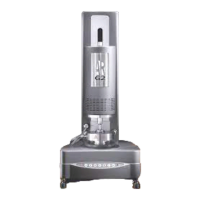
